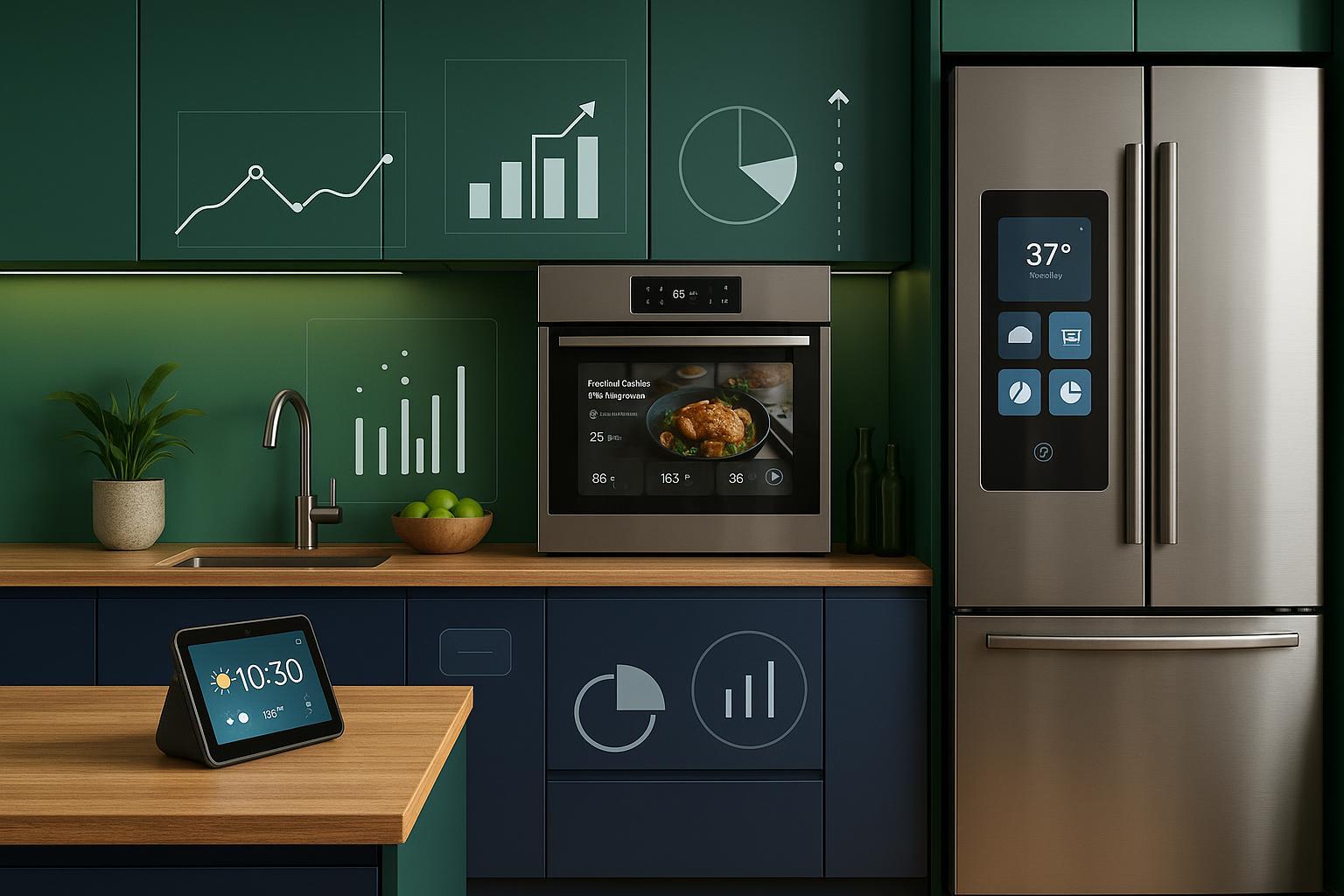Innovative Kitchen Marketing Strategies for 2025: Capturing the Modern Consumer

The New Era of Kitchen Marketing: Why 2025 Will Be a Watershed Year
The kitchen is transforming—again. As we approach 2025, the shift is no longer just about the latest color palettes or next-gen appliances. The way consumers shop for kitchen products is being disrupted by AI-driven personalization, eco-conscious values, and smarter, data-fueled marketing. E-commerce kitchen brands—especially those on Shopify and DTC channels—are facing unprecedented opportunities and heightened competition.
But where should future-focused marketers place their bets? How can brands not just adapt but lead in this fast-evolving landscape? Let’s unpack the latest trends, dissect what the modern kitchen consumer truly wants, and deliver a practical analytics-powered playbook for hypergrowth in 2025.
Key Consumer & Market Trends Defining 2025
-
Color and Customization Take Center Stage: According to the NKBA 2025 Kitchen Trends Report, bold hues are ousting minimalist whites—green (76%), blue (63%), and brown (56%) top designer picks. More than 90% of surveyed pros link kitchens with personal expression, and 71% observe rising demand for unique, bespoke aesthetics.
-
Multifunctionality and Hybrid Lifestyles: Post-pandemic, consumers demand kitchens designed for work, wellness, and play. Features like second islands (52%) and tech-integrated sinks (83%) appeal directly to these hybrid living realities.
-
Sustainability and Wellness: Eco-friendly materials, biophilic design, and mood-centric lighting (88% highlight lighting aesthetics) are no longer just nice-to-haves; they’re table stakes for aspiration-driven shoppers.
-
E-commerce Soars: Kitchen and home categories lead online growth. For instance, Lifetime Brands reported a 9% YoY e-commerce sales increase with nearly a quarter of revenue now digital (Digital Commerce 360).
Understanding the Modern Kitchen Shopper: Personas & Purchase Drivers
Today’s kitchen consumer is more segmented and demanding than ever:
1. The Eco-Seeker: Prioritizes sustainability, recycled materials, and ethical sourcing. Looks for eco-certifications, environmental impact metrics, and brands with transparent supply chains.
2. The Tech Enthusiast: Drawn to smart appliances and connected devices. Expects app integrations, smart home compatibility, and personalized digital experiences. Most influenced by AI-powered content, interactive demos, and influencer unboxing videos.
3. The Style Aficionado: Craves bold aesthetics, color-coordinated devices, and design inspiration. Researches trends on Instagram and Pinterest, favoring personalized product quizzes and shoppable social feeds.
4. The Wellness-Driven Buyer: Seeks ergonomic designs, non-toxic materials, and features that support health, mindfulness, and hybrid life setups.
Shopping Journey Evolution: Shoppers now toggle between channels—using AI chatbots for product questions, comparing brands across devices, and expecting tailored follow-up (for example, personalized retargeting after cart abandonment).
Data-Driven Kitchen Marketing Playbook for 2025
1. Nail Multi-Touch Attribution for Smarter Campaign ROI
Most competitor articles skim over true measurement, but in 2025, multi-touch attribution is the backbone of effective kitchen marketing. Platforms like Attribuly empower brands to track every touchpoint—ad clicks, influencer posts, email opens—across Shopify, TikTok, Google, and beyond. This not only surfaces unknown revenue drivers but also ensures you allocate budget to what truly converts.
- Action Step: Implement server-side tracking and link builder tools (like Attribuly’s) for bulletproof attribution, especially important as ad platforms evolve and cookie tracking wanes.
2. Master Advanced Segmentation and Targeting
2025 success hinges on recognizing and activating kitchen buyer segments—eco, tech, style, wellness, and hybrid blends. Leading brands use platforms such as Klaviyo (see Svenfish case study) and Attribuly’s segmentation engine to trigger the right message at the right time on the right channel.
- Action Step: Use behavioral and transactional data to build custom segments (example: target “eco-tech” seekers who viewed smart composters but haven’t converted). Automate win-back flows and cross-sell nurture streams to increase lifetime value.
3. Go Omni-Channel: Leverage the Right Mix for 2025
-
Social: Gen Z’s love affair with Instagram and WhatsApp (eMarketer) means vertical video and interactive polls will outperform static catalog ads.
-
Influencers & UGC: Authentic creator partnerships drive kitchen category discovery, especially on TikTok and Pinterest.
-
Content Automation: Harness AI for personalized creative (dynamic product descriptions, virtual design assistants) and to optimize your email/SMS outreach flows.
-
Action Step: Set up automated abandonment and retargeting campaigns, using advanced attribution/segmentation to identify the highest-value drop-off points and reengage them across touchpoints.
4. Optimize Campaigns with Analytics and AI
-
Performance Dashboards: Use Shopify’s real-time dashboards, bolstered by Attribuly-style attribution overlays, to analyze CVR, CTR, ROAS, and multi-channel contribution.
-
A/B Test Relentlessly: Constantly split test creative, offers, and channels—industry data suggests a 35% CTR lift and 18% jump in conversion with routine optimization (Searchspring).
-
Action Step: Regularly review multi-attribution paths (see which influencer, ad, or email sequence closed the sale) and optimize media spend accordingly.
Kitchen Marketing in Action: A Real-World Blueprint
Imagine a growing DTC cookware brand launching their 2025 line:
- Discovery: Campaign launches on Instagram Reels and Pinterest, using influencer UGC and shoppable videos.
- Engagement: Attribuly tracks every user journey: those who click, like, subscribe, and abandon cart.
- Segmentation: Solo cooks vs. family chefs are split into segments; email/SMS flows are tailored to each profile.
- Conversion: Advanced retargeting flows recapture interest and identify which touchpoint finally drives the sale—revealing hidden ROI along the way.
- Optimization: Performance is monitored in real time on attribution dashboards (combining Shopify analytics and Attribuly multi-touch insights), letting the brand double down on what works, eliminate wasted spend, and systematically grow profit margins.
Why Most Competitors Miss the Mark
Competitor articles—like those from Accio and LinkedIn analysis—mainly highlight trends or list products. What’s missing? Deep analytics, attribution frameworks, real-world segmentation, and actionable campaign roadmaps. The brands that win in 2025 will combine cutting-edge product strategy with bulletproof, analytics-driven marketing operations.
The Future: AI, Automation, and Sustainable Growth
As AI-powered chatbots, recommendation engines, and predictive analytics become baseline tools, the best kitchen marketers will use platforms like Attribuly to:
- Unify cross-channel data for a 360-degree customer view
- Automate personalized engagement (from first click to loyal repeat customer)
- Transparently measure ROI—even as privacy rules and cookie restrictions multiply
- Power sustainable, ethical growth with clear, trackable eco-impact messaging
Ready to Win Kitchen E-commerce in 2025?
Innovation, data, and agile attribution are the new rules. Whether you’re pivoting your DTC appliance lineup, launching zero-waste products, or looking to dominate new digital channels, advanced analytics are your edge. Discover how Attribuly can transform your kitchen marketing—giving you the campaign intelligence you need to capture the modern consumer and lead in 2025.
Sources & Further Reading:
- NKBA 2025 Kitchen Trends Report
- Digital Commerce 360 – Lifetime Brands Q4 2024
- eMarketer: Gen Z on Instagram
- Searchspring: 2025 Trends
- Attribuly – Advanced Attribution for E-commerce Brands
- Shopify Analytics Guide
